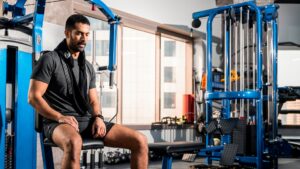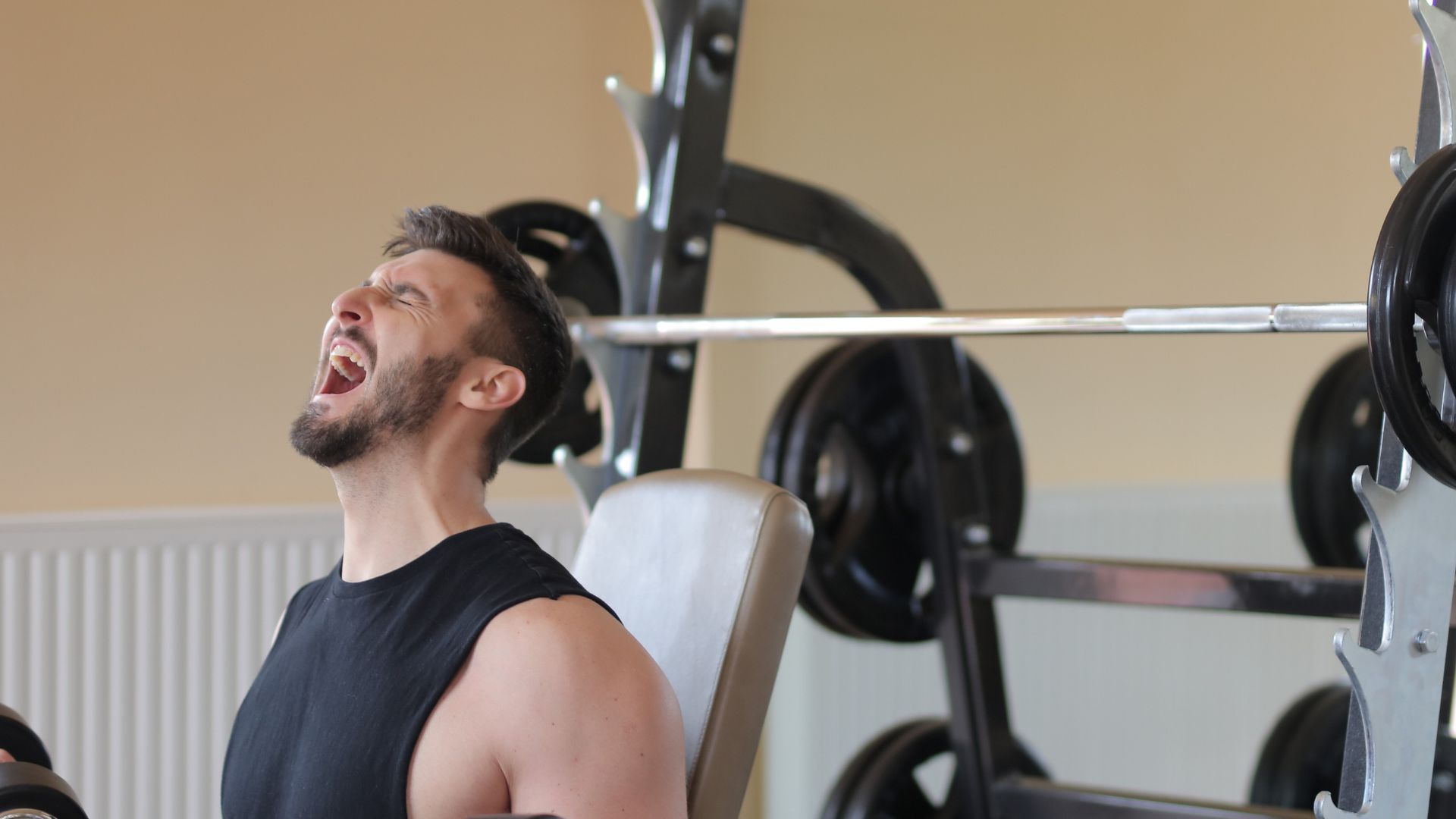Here are four potential reasons why you may be feeling it so much in your hips when you squat: osteoarthritis of the hip, Misaligned hip joints, tight hip flexors: and Weak hip muscles . It is very important to note that these are just a few potential reasons for hip discomfort while squatting and that a proper diagnosis from a professional is crucial in determining the exact cause of your pain.
Osteoarthritis of the hip.
Osteoarthritis is a degenerative joint disease that is characterized by the breakdown of cartilage in the joints.
The hip joint is particularly susceptible to developing osteoarthritis due to the amount of weight and stress it bears on a daily basis.
Over time, the cartilage in the hip joint can wear away, leading to bone-on-bone contact that causes pain and stiffness.
As the cartilage breaks down, the joint space can narrow, causing bone spurs to form around the joint.
These spurs can further contribute to pain and stiffness in the hip area, groin, buttocks, and thighs.
Osteoarthritis of the hip can be caused by a number of factors, including age, genetics, prior injury or surgery to the hip, and obesity.
Symptoms of osteoarthritis of the hip can include pain or stiffness in the hip joint, a grinding or popping sensation when moving the hip, decreased range of motion, and difficulty walking or performing other activities.
While there is no cure for osteoarthritis of the hip, there are several treatment options available to manage symptoms and improve quality of life.
These can include physical therapy, pain management techniques, weight management, and in severe cases, surgery to replace the damaged hip joint.

Misaligned hip joints.
Prolonged periods of sitting can cause the muscles in the hip flexor group to become tight and shortened, which can cause the hip joint to become misaligned.
When the hip joint is misaligned, the mechanics of the joint can be altered, which can cause pain and discomfort during movements such as squats.
Sitting for extended periods of time can also lead to weak glutes, which can further contribute to hip misalignment and pain during squats.
Weak glutes can cause the hips to tilt forward, leading to a lack of stability and an increased risk of injury.
To prevent hip misalignment and pain during squats, it is important to take breaks from prolonged sitting and to perform exercises that stretch and strengthen the hip flexors and glutes.
Examples of these exercises include lunges, bridges, and hip flexor stretches.
Additionally, proper squat form and technique are crucial in preventing hip pain during squats. This includes maintaining a neutral spine, keeping the knees in line with the toes, and engaging the glutes throughout the movement.
Tight hip flexors.
The hip flexors are a group of muscles that allow for movement at the hip joint, including lifting the knee and bending at the waist.
When these muscles become tight and shortened, they can limit the range of motion in the hip joint and cause a feeling of tightness across the hips.
During a squat, tight hip flexors can further contribute to discomfort by inhibiting proper form and technique.
Tight hip flexors can cause the pelvis to tilt forward, which can lead to an excessive arch in the lower back and an increased risk of injury.
To prevent tight hip flexors and discomfort during squats, it is important to incorporate exercises that stretch and lengthen the hip flexor muscles. Examples of these exercises include lunges, hip flexor stretches, and foam rolling.
Proper squat form and technique are also important in preventing discomfort from tight hip flexors.
This includes maintaining a neutral spine, keeping the knees in line with the toes, and engaging the glutes throughout the movement.
Weak hip muscles.
The glutes are the largest muscle group in the body and play a crucial role in hip stability and movement.
When the glutes are weak, particularly the posterior muscles, it can lead to poor control of the hip joint and affect squat technique, potentially leading to hip pain.
Weak glutes can cause the hips to tilt forward, leading to an excessive arch in the lower back and a loss of stability in the hip joint.
This can put extra stress on the hip joint and surrounding muscles, leading to pain and discomfort during squats.
To prevent weak hip muscles and hip pain during squats, it is important to incorporate exercises that strengthen the glutes and improve hip control.
Examples of these exercises include squats, deadlifts, lunges, and glute bridges.
Proper squat form and technique are also important in preventing hip pain from weak hip muscles.
This includes maintaining a neutral spine, keeping the knees in line with the toes, and engaging the glutes throughout the movement.
Strengthening the glutes and maintaining proper form during squats can improve hip stability, reduce pain, and improve overall athletic performance.
Here is a chart table with 15 possible reasons why someone might feel hip pain or discomfort during squats, as well as potential fixes for each issue.
| Reason | Fix |
|---|---|
| Tight hip flexors | Incorporate hip flexor stretches and foam rolling into your warm-up routine. |
| Weak glutes | Strengthen the glutes with exercises like squats, deadlifts, and glute bridges. |
| Poor squat form | Focus on maintaining a neutral spine, keeping the knees in line with the toes, and engaging the glutes throughout the movement. Consider consulting a coach or trainer for proper form guidance. |
| Lack of hip mobility | Incorporate hip mobility exercises like leg swings, hip circles, and hip openers into your warm-up routine. |
| Muscle imbalances | Address any muscle imbalances by incorporating unilateral exercises like lunges and single-leg squats into your training. |
| Overuse injuries | Take a break from squatting or reduce your squatting volume to allow overuse injuries to heal. |
| Poor ankle mobility | Address poor ankle mobility with ankle mobility exercises like ankle circles and calf raises. |
| Incorrect footwear | Wear shoes with a flat, stable sole that provide good support for the feet and ankles. |
| Incorrect bar placement | Ensure the bar is placed correctly on your back or shoulders to avoid excess stress on the hips. |
| Tight IT band | Incorporate IT band stretches and foam rolling into your warm-up routine. |
| Poor warm-up | Incorporate a thorough warm-up that includes mobility exercises, dynamic stretches, and activation exercises. |
| Lack of core stability | Strengthen the core with exercises like planks, side planks, and bird dogs. |
| Pre-existing conditions | Consult a medical professional to address any pre-existing conditions that may be contributing to hip pain during squats. |
| Excessive weight | Reduce the weight you are squatting to a manageable level that allows for proper form and technique. |
| Excessive volume | Reduce the volume of squats in your training routine to allow adequate recovery time for the hips. |
It is important to note that this is not an exhaustive list and that hip pain during squats can have many potential causes. If you are experiencing persistent or severe hip pain, it is always recommended to consult a medical professional for proper diagnosis and treatment.
Related video on how to fix your pelvic ^ ^
Conclusion
In conclusion, experiencing hip pain during squats can be due to several possible reasons, including muscle tightness, poor form, muscle weakness, lack of mobility, and pre-existing conditions.
Identifying the specific cause of hip pain and addressing it with targeted solutions can help alleviate discomfort and improve squat technique.
Incorporating hip flexor stretches, glute strengthening exercises, and mobility drills into your warm-up routine, ensuring proper squat form, and reducing excessive weight, volume, or intensity can all be effective ways to reduce hip pain during squats.
Additionally, consulting with a medical or fitness professional can help provide personalized recommendations and ensure proper diagnosis and treatment of any underlying conditions.
By addressing hip pain during squats, you can enhance your athletic performance, reduce injury risks, and improve overall fitness and well-being.
Sources:

Hey there, it’s Mike Rrsq, the Editor-in-Chief over at Jsquat.com, and I’m absolutely obsessed with all things squat fitness! I’ve been lucky enough to get some serious recognition for my work in this field. With a solid background in the fitness and wellness industry, I’ve been there right from the get-go, helping shape this website into what it is today.
You see, I’m not just the boss around here; I’m also a passionate contributor. I love sharing my insights through my articles, and trust me, they’re not your run-of-the-mill stuff. Each piece I write is a labor of love, filled with my expertise and real-world experience in the fitness universe. So, if you’re into fitness and looking for some inspiration, you’re in the right place!

